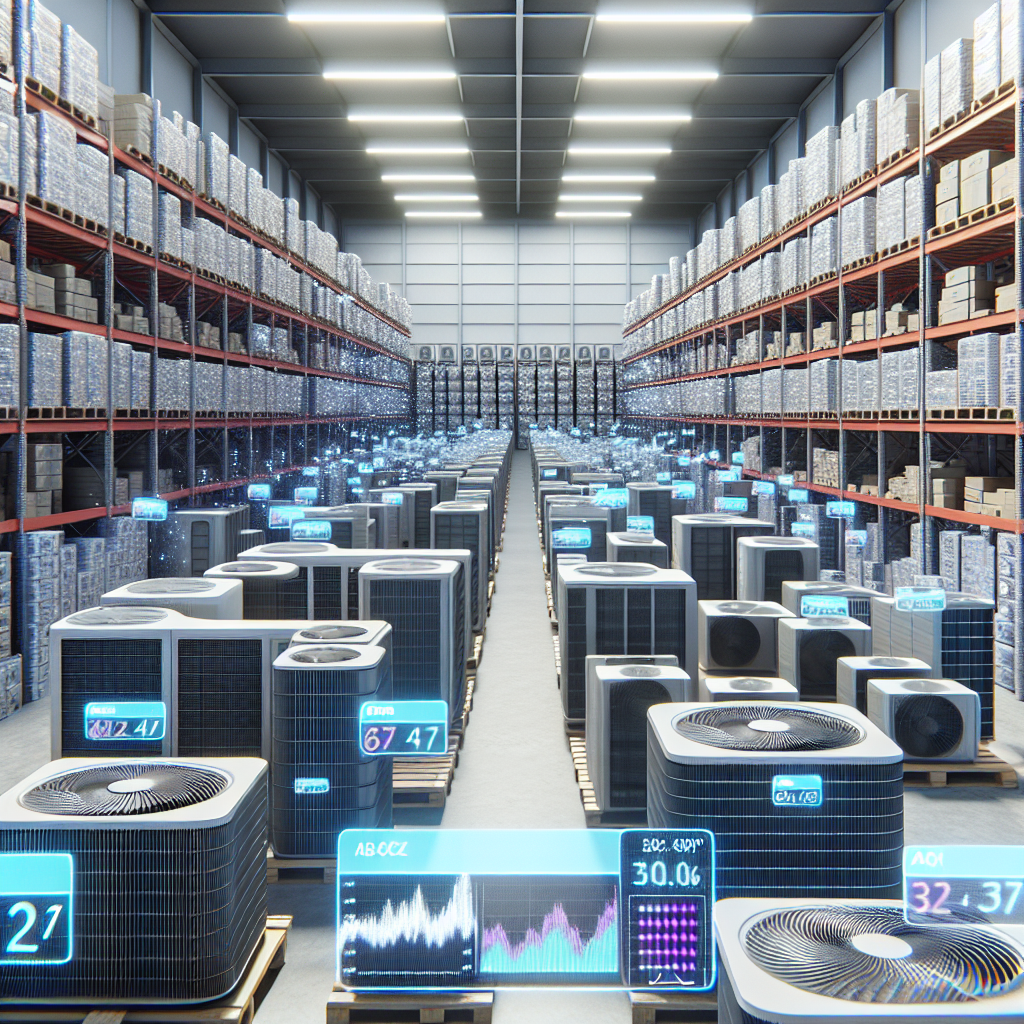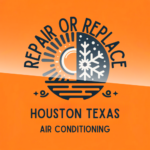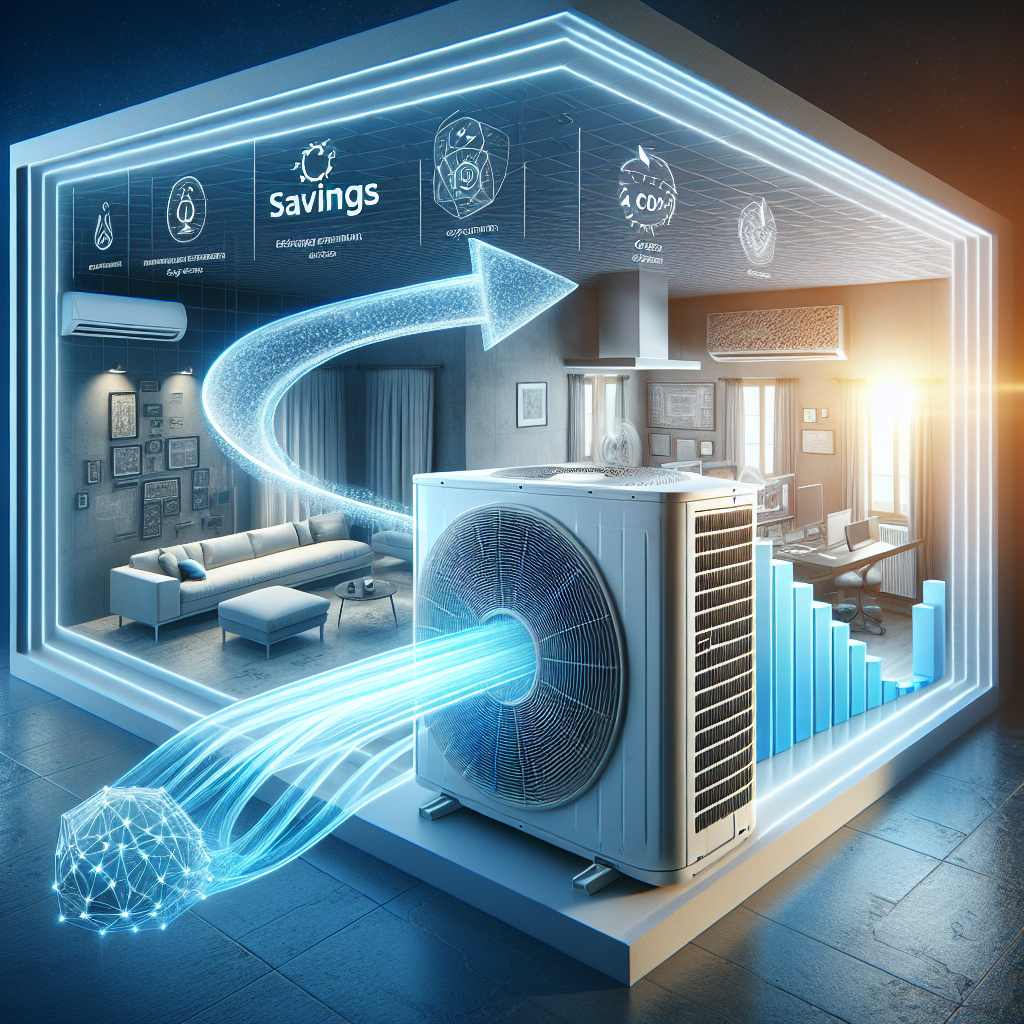Many folks are grappling with the same issue as prices seem to be climbing. A variety of factors are driving the increase in cooling system pricing recently.
To start with, the rise in material costs plays a major role.
With the global supply chain all over the place, manufacturers find it increasingly tough to keep their prices in check.
Then there’s the labor shortage affecting the HVAC industry, causing installation costs to soar.
Combine these factors with an uptick in market demand, and you’ve got yourself a perfect storm that pushes prices higher.
The fluctuating cost of air conditioning, along with HVAC pricing and installation costs, is influenced by cooling system pricing and market demand.
Click here to learn more about: prices.html
Cost Of Air Conditioning Explained
Now that we’ve tackled what’s driving up prices, let’s understand the cost of air conditioning itself. Figuring out what it takes to keep your home cool can feel overwhelming, but we’re here to break it down for you.
Seeking out affordable AC solutions is crucial for enjoying a comfortable home without blowing your budget. With a little knowledge about pricing strategies, you can dodge those nasty surprises when the bill arrives.
Seasonal demand spikes play a huge role in your service options and pricing, especially during springtime, making it a great time to schedule an AC check-up. A proactive approach during these busy times can pay off in the long run, particularly when thinking about installation costs.
There are many factors that impact AC pricing, whether it’s for repairs or complete replacements. Weighing your choices carefully can help you manage expenses better. Adopting a flat-rate pricing model is particularly helpful, letting you know exactly what you’re paying for without any hidden fees.
Some service providers offer maintenance plans that can lead to long-term savings and smooth performance during those hot months. On top of this, staying informed about supply chain issues, inflation, energy efficiency ratings, competitive pricing, and seasonal demand spikes is essential for making smart financial decisions.
Additionally, understanding how market demand affects cost can give you insight into current HVAC pricing trends. Keeping an eye on equipment shortages, labor costs, warranty costs, and the repair vs. replace decisions can help you navigate the ins and outs of air conditioning expenses.
By being smart in your approach and considering different financing options, you’ll not only be more budget-conscious but also enhance your investment in HVAC systems for the best indoor climate control. Remember, it’s all about getting good value for money and being aware of the bigger picture when it comes to operational costs and product lifespan.

How HVAC Pricing Affects Budgets
Once you’ve grasped the various factors that drive AC costs, it’s time to think about how these HVAC pricing elements can play a role in your financial planning. Understanding the cost of air conditioning not only influences your comfort choices but also shapes your overall budget strategy.
Getting a handle on how labor costs and market demand work allows you to make smart financial choices for your wallet. Paying attention to maintenance expenses can really pay off.
Staying proactive with regular maintenance is essential to dodge those surprise expenses that can really stack up. By keeping up with routine services, you extend the product lifespan of your unit while also saving a significant amount in the long run.
Plus, picking brands known for good brand reputation often means fewer maintenance issues later, giving you that much-needed peace of mind.
It’s also wise to be ready for unexpected repairs. Setting aside some cash to cover repair vs. replace decisions, equipment shortages, and inflation helps protect your budget. This kind of foresight keeps you ahead of the game and ready for the latest technological advancements.
Managing Heating and Cooling Costs
- Regular maintenance can reduce unexpected repair costs by up to 30%.
- Investing in reliable brands can lead to a 20% decrease in long-term repair expenses.
- Setting aside 1-3% of your home’s value annually for maintenance can help cover unexpected costs.
- Upgrading to energy-efficient systems can save homeowners an average of 15% on energy bills.
Understanding Installation Costs For AC
Assessing Installation Expenses
With a variety of factors influencing the cost of air conditioning, it’s essential to focus on installation expenses. When you’re eyeing a new cooling system, it’s not just about the upfront price; you should also keep in mind the potential long-term savings on energy costs and maintenance down the line.
Factors That Influence Costs
Installation expenses can vary significantly based on a few key factors, like the type of system you choose. Whether you’re considering a traditional central air conditioning unit, a ductless mini-split, or even a window air conditioner, cooling system pricing will differ. Local labor rates and market demand also play a big role in what you’ll end up paying.
The Importance of Professional Help
Another crucial element to think about is the current state of your home’s infrastructure, which can greatly affect overall costs. Bringing in a licensed and insured HVAC technician is a smart choice; they make sure the job is done correctly and help you avoid headaches related to inefficient unit performance or unplanned repair costs later.
Avoiding DIY Pitfalls
Sure, you might think you’ll save a bit with a DIY approach at the start, but taking shortcuts can lead to unexpected refrigerant prices, increased warranty costs, and tough repair vs. replace decisions that can really mess with your indoor climate control and unit efficiency.
Long-term Savings with Energy-efficient Models
Investing in energy-efficient models can lead to significant long-term savings—in terms of both your monthly bills and maintenance expenses. Many systems today feature energysaving features that can help lower your energy consumption. Checking out these options can provide better value for money while also enhancing your home’s comfort.
Planning and Decision-making
Remember, taking time to plan and considering installation complexities, along with choosing reputable brand models, can really pay off in the long run. Pricing structures can vary widely based on local market conditions, so being informed will help you make better budget considerations. Don’t rush the process—take your time to compare different models and think through all your available options.
What Drives Cooling System Pricing
As we’ve already explored the nuts and bolts of installation costs and budget considerations, it’s also important to understand what influences the overall pricing of your cooling system. Several key components play a vital role in determining how much you’ll end up spending.
For starters, brand reputation does play an important role in the market. Established names in the industry often come with a higher price tag, but they usually back that up with solid warranties and great customer service, which can really help avoid future headaches.
Efficiency ratings are another big deal to think about. For instance, choosing a model with a high Seasonal Energy Efficiency Ratio (SEER) can lead to impressive long-term savings on energy bills. When you’re considering your options, factor in ongoing maintenance expenses against potential repair or replacement costs; knowing when to fix or upgrade can really impact your financial game plan.
Additionally, outside factors such as market demand and construction delays can shift prices significantly. Changes in supply chain issues and rising material costs can drive up expenses for central air conditioning, ductless systems, smart thermostats, and other electrical components. Environmental regulations also come into play, affecting the costs and availability of various models.
- Brand reputation can influence pricing, with established brands often offering better warranties and customer service.
- Higher efficiency ratings, such as a high SEER, can lead to long-term energy cost savings.
- Ongoing maintenance costs should be compared to potential repair or replacement expenses when evaluating cooling systems.
- External factors like supply chain issues and economic changes can affect the prices of cooling systems.
Analyzing Market Demand For AC Units
Let’s take a closer look at how the local climate affects demand for AC units in Houston. As temperatures rise and spring rolls in, residents start thinking about how to stay cool during the scorching summer months.
This time of year is crucial for homeowners to reassess their cooling solutions since demand for effective units spikes. Local service providers feel the impact, making this a busy time for everyone involved.
The unpredictable nature of Houston’s weather plays an important role in how demand shifts throughout the year. With spring on the horizon, many folks are eager to schedule maintenance checks to ensure their cooling systems are running at their best. During this season, promotional deals from AC services can present great opportunities for proactive maintenance.
Regular upkeep not only boosts unit efficiency but also tackles issues like rising material costs and potential equipment shortages, both of which can affect residential pricing. As demand varies, grasping these trends and how they align with consumer habits is essential.
Staying aware of broader impacts, like inflation or changing labor costs, can help homeowners make smart decisions. When considering upgrades such as ductless systems or energy-saving features, understanding the relationship between seasonal demand and pricing structures can lead to more long-term savings.
So, whether you’re thinking about upgrading your cooling system or making sure it’s ready for the season, keeping an eye on market demand and local promotional offers can help you get the most value for your investment in HVAC.
The Impact Of Supply Chain Issues
Connecting the dots from our earlier discussions about market demand and pricing, it’s fascinating how various external events can affect air conditioning availability. When unexpected situations arise, like natural disasters or political unrest, they can create hiccups that flow through the marketplace, impacting what’s on store shelves and how much we pay for them.
Challenges in Availability
These disruptions can lead to longer waits for your new AC unit or essential parts, which is particularly frustrating when the heat is ramping up. With this kind of unpredictability, it’s not uncommon to see fluctuations in pricing that can catch homeowners off guard.
Cost Considerations
Transportation costs can rise as suppliers struggle to bring materials to market, which then impacts the cost of air conditioning repair or replacement parts. If your unit needs attention during these times, prepare for possible delays and higher costs for repairs. Keeping an eye on budget considerations is crucial, especially when evaluating installation costs or exploring financing options for those unexpected upgrades.
Air Conditioning Market Disruptions
- Natural disasters can significantly disrupt supply chains, leading to delays in production and delivery of air conditioning units.
- Political unrest can affect the availability of raw materials and transportation, contributing to increased costs.
- Rising transportation costs can lead to higher prices for replacement parts, impacting consumers’ budgets.
- Longer wait times for repairs or new units can worsen consumer frustration, especially during peak temperature months.
Inflations Role In AC Prices
After looking at how availability and market conditions shape air conditioning options, it’s clear that rising material costs also play a significant role in your HVAC experience. With expenses increasing across the board, your cooling system isn’t immune to these financial pressures.
Think about how manufacturers facing higher costs for parts like compressors or coils end up passing those expenses on to you. If you’re considering upgrading your HVAC setup, the complexity of installation can really affect overall pricing, making it crucial to understand how different variables impact your decisions.
Keeping an eye on local market conditions will help you navigate the landscape smartly if you plan on enhancing your home’s cooling system. As we talk about energy efficiency ratings, embracing these insights will empower you to make informed choices—leading to long-term savings and better value for your investment in HVAC.
Exploring Energy Efficiency Ratings
Let’s take a moment to talk about energy efficiency ratings because they’re super important for making the best choices for your HVAC system. These ratings—like SEER (Seasonal Energy Efficiency Ratio) and EER (Energy Efficiency Ratio)—give you a solid indication of how effectively your system uses energy. Understanding these ratings can have a big impact on your energy consumption, which means you could end up cutting down on your operational costs.
The Benefits of High Efficiency Ratings
In general, the higher the rating, the more you can save over time. Choosing a system with great energy efficiency isn’t just about staying comfortable; it also plays a crucial role in lowering your climate impact while keeping your expenses manageable. Sounds like a good deal, doesn’t it?
Impact of Market Conditions
Now, let’s think about how things like inflation can affect those long-term savings you’re aiming for, especially with rising energy prices and potential equipment shortages. When costs are always changing, having a clear understanding of energy efficiency ratings can really guide your choices. Whether it’s comparing different brand models or looking at the installation complexity, these insights give you the knowledge you need for smart investment in HVAC.
Key Efficiency Ratings
| Efficiency Rating | Impact on Costs |
|---|---|
| SEER Rating | Higher ratings lead to lower energy bills |
| EER Rating | Better efficiency reduces operational costs |
| Long-term Savings | Investing in high-efficiency systems saves money over time |
| Climate Impact | Efficient systems contribute to reduced carbon footprint |
Seasonal Demand Spikes And Price Fluctuations
The Importance of Pre-Summer Maintenance
Remember how we talked about energy efficiency ratings and market conditions earlier? It’s vital to think about how seasonal demands can really impact the cost of air conditioning services, especially as we head into those hotter months. As summer approaches, homeowners often rush to ensure their HVAC systems are ready to deliver that much-needed cool air. This scramble highlights the importance of pre-summer maintenance, which can help you spot small issues before they turn into hefty repair costs, ultimately extending the product lifespan and saving you some cash.
Understanding Price Fluctuations
During these peak months, you might notice prices creeping up. With increased demand and possible equipment shortages, service costs can take a significant jump. Staying aware of these market trends helps you prepare and steer clear of any unexpected bumps in your HVAC pricing.
Planning Ahead for Comfort and Savings
If you take the time to schedule maintenance early, you can enjoy a comfy indoor climate control experience without feeling the pinch in your wallet. Plus, being proactive about seasonal demand can open up chances for competitive pricing and seasonal promotions for necessary upgrades or repairs. So, keep an eye on local market conditions, and don’t hesitate to jump in when you see those prices starting to rise!
Why Brand Reputation Influences Costs
As we chat about the ins and outs of seasonal demand and maintenance strategies, brand reputation stands out as a key factor in deciding the costs of air conditioning services. How a company is viewed can really shape its pricing approach. In the AC repair world, businesses with solid reputations often have higher prices because customers link that name with quality and reliability.
When you hear buzz about a brand that’s highly recommended, it makes sense that folks are ready to spend a bit more for the comfort of knowing they’ll get quality service. This extra expense is often worth it for the peace of mind that comes from choosing a trusted name.
Main Points to Cover
- Trust and Credibility: Companies with stellar customer testimonials and high BBB ratings build trust, which helps them set higher prices. This credibility usually means customers are okay with spending a bit more for that reassurance.
- Think about using rebates and incentives while also considering regional pricing differences to get the most value and improve technology integration.
| Factors Influencing Pricing | Impact on Pricing Strategy |
|---|---|
| Customer Testimonials | Boost trust, allowing for competitive pricing |
| BBB Ratings | Better ratings lead to increased customer willingness to pay |
| Brand Reputation | Well-regarded brands can command higher prices due to perceived value |
| Regional Pricing Differences | Adjusting prices based on location can optimize customer value |
What Is The Price Range For AC
What Is The Cost Of An AC Unit


